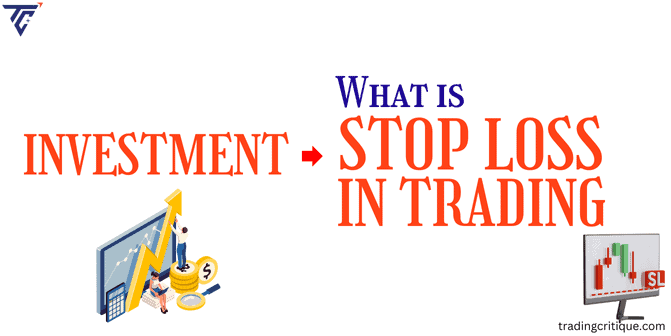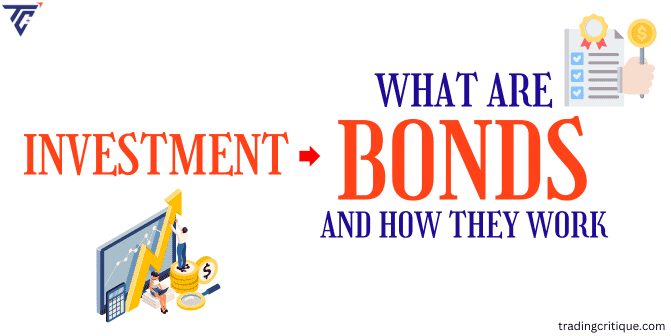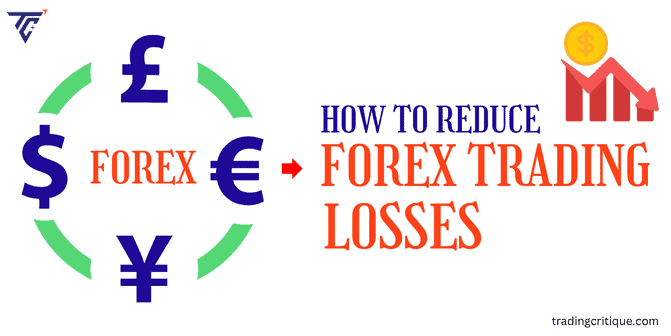Easy Steps to Stop Loss in Trading & Make Sure You Use It
A stop loss is a risk management tool used in trading to potentially limit losses on a position in a security. It involves setting a predetermined price level at which the position will be automatically closed to prevent further losses. Let’s see what it is and how to use it in trading.
Quick Insights
The purpose of a stop-loss is to restrict an investor’s loss on an investment in securities if it moves negatively.
A market order to purchase or sell is essentially triggered by the stop-loss whenever a predetermined price barrier is exceeded.
You won’t need to constantly monitor the market, or manually check for opening trades at your preferred price.
What is stop loss in trading?

For example: You buy a stock at $100 and set a stop loss at $95. If the stock price drops to $95, your stop loss order will trigger price, and the stock will be sold at the current market price, limiting your loss to $5 per share.
How to put stop loss in trading?
Setting a stop-loss order in trading can vary slightly depending on the platform or broker you use. However, the general process is similar across most trading platforms. Here’s a step-by-step guide:
- Select the trading platform of your choice and proceed to sign in to your account on that specific platform.
- Select any financial instrument, whether an equity, currency, digital asset, or other security that you wish to actively buy and sell.
- Click on the 'Order' section located in the deal ticket of the market you are currently trading in. It is essential to determine if you want to go long or short before placing your trade.
- Select from either a 'good till canceled' stop entry, which remains active until reaching the specified price level (unless manually canceled), or a 'good till date' order, which will automatically expire on a predetermined future date if not executed.
- Choose the price that will activate your stop order - the less ideal amount you're willing to accept - and submit the order (the platform will indicate if it's a stop limit order based on the opening price you select and displays that on the 'Place order' button).
- After putting in the stop-loss order, be certain to review your order history or open orders to verify that the stop-loss is configured properly.
- Keep track of your position even with the stop-loss order in effect, as it is crucial to stay vigilant about your position and stay informed of market conditions.
How to use stop-loss in trading?
Stop loss is a crucial risk management tool in trading, protecting investments by limiting potential losses. Effective use involves following specific steps.
Understand a stop loss
A stop loss is an order located with a broking to shop for or promote a safety while it reaches a sure price. It is designed to restrict an investor’s lack of a position.
Regularly reevaluate and adjust
It is important to periodically reevaluate and adjust your stop-loss orders as market conditions evolve, in line with your trading plan.
Analyze the market
Technical analysis helps determine the best stop loss levels, considering support and resistance levels, volatility, and moving averages, with wider stops required for more volatile assets.
Study your trading history
Review your previous trades to detect tendencies and developments. Doing this can assist you in perfecting where you place stop-losses and enhance your decision-making skills.
Choose the type of stop loss order
A variety of stop-loss orders exist, including standard stop loss, which activates a market order upon reaching the stop price; Trailing stop loss, adjusting based on asset price movements by a fixed percentage; and Stop-Limit Order, converting to a limit order at the stop price with specified price boundaries.
Stick your plan
After you have set your stop loss amounts, do not deviate from them. Making choices based on emotions can result in bad trading results. Have confidence in the analysis you did beforehand and follow the stop loss orders you already decided on.
What is the best stop-loss strategy?
Traders commonly use various stop-loss strategies, varying based on their trading style, risk tolerance, and asset type.
Percentage-based stop loss
This strategy involves setting a stop loss order at a certain percentage below the purchase price. It’s simple and easy to implement.
Support and resistance levels
Support and resistance (S/R) areas are important for placing stop losses in day trading. If the price crosses these levels, it invalidates the trade and signals exit. This technical analysis strategy identifies key price levels at which prices may rebound or reverse. Placing below or above these levels increases the chance of a losing trade turning positive before the stop loss is hit.
ATR (Average True Range) Stop Loss
This strategy uses the ATR indicator to set stop losses based on the volatility of the asset. The ATR measures market volatility by calculating the average range between high and low prices over a certain period.
Trailing Stop Loss
A trailing stop loss moves with the price of the asset, maintaining a set distance (either percentage or dollar amount) from the current price. This allows you to lock in profits while limiting loss money.
Risk-per-trade approach
The risk-per-trade approach is a simple stop-loss strategy for managing trading risk. It involves determining the maximum risk you are willing to accept on each trade and setting a stop loss to limit losses. The 2% rule is a popular method, stating that you should never risk more than 2% of your account on any single trade.
Stop loss limitations
Stop loss is a trading strategy to reduce risk, but setting the correct level can be challenging due to market volatility. Large institutions use large sell orders to trigger stop losses.
If a stop loss is triggered, it may be challenging to re-enter the market at a favorable price due to the continuous movement of prices.
Conclusion
Stop loss orders are essential for investors in US stocks to protect their holdings, limit drawdown, and efficiently limit risk exposure. Effective stop-loss strategies, such as percentage-based stops, support and resistance levels, moving averages, and trailing stops, help traders protect their capital and manage risk.
Understanding proper positioning, considering important lessons, and avoiding mistakes, to stop losses will increase trading results. By thoughtfully implementing and consistently adhering to these strategies, traders can safeguard their investments against significant losses while allowing for profit opportunities.
Pro Tip
With the help of our trusted forex brokers, you may grow your money with maximum security. We provide you the chance to learn how to invest your money in a variety of markets and asset classes, including stocks, bonds, mutual funds, FX, and cryptocurrencies.
FAQs - Frequently Asked Questions
1. Can I trade without stop-loss?
Yes, traders who do not use stop-loss mechanisms may be positioned to hold their trades for a longer period, potentially increasing their profits. However, it is important to recognize that this strategy exposes traders to substantial losses if the market turns in an unfavorable direction.
By not setting predetermined exit points, traders give up the ability to automatically close losing trades. While this strategy allows some traders to ride out short-term fluctuations and earn high returns, it also raises the risk of enduring major setbacks if trends reverse.
2. How can I establish the stop-loss price level?
Determining the most appropriate price for a stop-loss order should consider factors such as your willingness to accept risk, how volatile the price of the security is, and what you want to achieve with the investment. Analyzing technical indicators such as support and resistance levels can help determine the most appropriate price.
3. What is the appropriate stop-loss amount to set?
A trader who frequently buys and sells securities may set a stop loss at 5% below the purchase price. In contrast, an investor with a long-term price horizon may opt for a wider stop loss of 15% or more from the buy price.
It’s important to understand that once the stop price is reached, the stop order turns into a market order for immediate execution. Therefore, the actual executed sell price could vary substantially from the predetermined stop price.
4. What is the best stop-loss strategy?
The ultimate trailing stop-loss percent to make use of is both 15% or 20%. If you employ a momentum-based approach, a stop-loss plan can assist you in totally sidestepping market declines and even generating a minor profit while the market drops 50%.

Subscribe to
Our Newsletter
Latest Posts
How to Trade Forex | Learn 6 Strategies and Tips
Discover the world of forex trading with our comprehensive guide. Learn essential...
Read MoreFP Markets Review 2024: Everything You Need To Know
Founded in 2005, FP Markets is a leading online broker renowned for...
Read MoreHow to Invest in Ethereum in 2024 – Simple Guide for Beginners
Ethereum is a decentralized blockchain platform that enables smart contracts, enabling secure,...
Read MoreIs Cryptocurrency a Safe Investment? What You Need To Know
Investing in cryptocurrency involves selecting the right cryptocurrency and securely storing your...
Read MoreHow to Read Forex Charts for Beginners • Simple Methods
Traders look for the currency pair price movements, their patterns, and their...
Read MoreBonds: What it is, Types of Bonds & How they Work (2024 guide)
Are you seeking for safe investment with predictable returns? Our 2024 guide...
Read MoreWhat are The Best Crypto Trading Strategies for Beginners in 2024?
Unsure about choosing the best trading strategies for beginners in 2024? This...
Read MoreForex Pairs: How They Work, How To Read, Examples
Forex pairs are combinations of two different currencies that are traded in...
Read MoreBest Ways to Avoid Losses in Forex Trading
Foreign Exchange – Forex market is the world’s largest financial market in...
Read More









